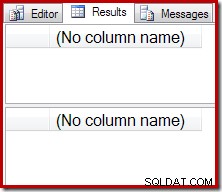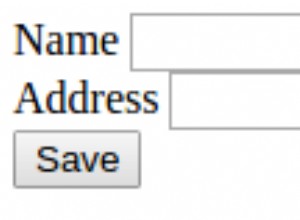Questa risposta è per l'hashing, password_hash() e password_verify() . Sia per mysqli che per pdo. Il collegamento in fondo ha ulteriori collegamenti e un po' di linguaggio sui sali e simili.
È fondamentale non utilizzare i dati forniti dall'utente direttamente con selezioni e inserimenti. Piuttosto, associa i parametri e chiama le istruzioni preparate a Evita attacchi sql injection . Le password non devono mai essere salvate in chiaro (testo non crittografato) nei database. Piuttosto, dovrebbero essere inviati tramite hash unidirezionali.
Nota anche. Questo mostra l'hashing della registrazione e la verifica dell'accesso. Non è in piena regola funzionalità Sto cercando di impegnare codecanyon per dieci dollari ... in modo tale che mostri una nuova registrazione di un indirizzo email (il login) esiste già, fa aggiornamenti, intendiamoci. In tal caso l'inserimento fallirà semplicemente a causa della chiave univoca impostata nel db. Lascio a te, lettore, il compito di eseguire la ricerca e dire "email già registrata".
Schema
CREATE TABLE `user_accounts2` (
`id` int(11) NOT NULL AUTO_INCREMENT,
`email` varchar(100) NOT NULL,
`password` varchar(255) NOT NULL,
PRIMARY KEY (`id`),
unique key(email) -- that better be the case
) ENGINE=InnoDB;
Dopo aver eseguito register.php e aver salvato un utente, i dati potrebbero assomigliare a questo:
select * from user_accounts2;
+----+-----------+--------------------------------------------------------------+
| id | email | password |
+----+-----------+--------------------------------------------------------------+
| 1 | [email protected] | $2y$10$U6.WR.tiOIYNGDWddfT7kevJU8uiz8KAkdxXpda9e1xuplhC/eTJS |
+----+-----------+--------------------------------------------------------------+
prima la sezione mysqli
register.php
<?php
mysqli_report(MYSQLI_REPORT_ALL);
error_reporting(E_ALL); // report all PHP errors
ini_set("display_errors", 1); // display them
session_start();
if(isset($_SESSION['userid'])!="") {
// you are already logged in as session has been set
header("Location: safe.php"); // note that this re-direct will at the top of that page
// ... and there to verify the session state so no tricks can be performed
// no tricks and gimmicks
}
if(isset($_POST['register'])) {
$email = $_POST['email'];
$ctPassword = $_POST['password']; // cleartext password from user
$hp=password_hash($ctPassword,PASSWORD_DEFAULT); // hashed password using cleartext one
// pretend the following is locked in a vault and loaded but hard coded here
$host="yourhostname";
$dbname="dbname";
$user="dbuser";
$pwd="password";
$port=3306; // comes along for the ride so I don't need to look up param order below
// end pretend
try {
$mysqli= new mysqli($host, $user, $pwd, $dbname,$port);
if ($mysqli->connect_error) {
die('Connect Error (' . $mysqli->connect_errno . ') ' . $mysqli->connect_error);
}
//echo "I am connected and feel happy.<br/>";
$query = "INSERT INTO user_accounts2(email,password) VALUES (?,?)";
$stmt = $mysqli->prepare($query);
// note the 2 s's below, s is for string
$stmt->bind_param("ss", $email,$hp); // never ever use non-sanitized user supplied data. Bind it
$stmt->execute();
// password is saved as hashed, will be verified on login page with password_verify()
$iLastInsertId=$mysqli->insert_id; // do something special with this (or not)
// redirect to some login page (for now you just sit here)
$stmt->close();
$mysqli->close();
} catch (mysqli_sql_exception $e) {
throw $e;
}
}
?>
<html>
<head>
<title>Register new user</title>
</head>
<body>
<div id="reg-form">
<form method="post">
<table>
<tr>
<td><input type="email" name="email" placeholder="Email" required /></td>
</tr>
<tr>
<td><input type="password" name="password" placeholder="Password" required /></td>
</tr>
<tr>
<td><button type="submit" name="register">Register</button></td>
</tr>
<tr>
<td><a href="index.php">Normal Login In Here</a></td>
</tr>
</table>
</form>
</div>
</body>
</html>
login.php
<?php
mysqli_report(MYSQLI_REPORT_ALL);
error_reporting(E_ALL); // report all PHP errors
ini_set("display_errors", 1); // display them
session_start();
if(isset($_SESSION['userid'])!="") {
// you are already logged in as session has been set
header("Location: safe.php"); // note that this re-direct will at the top of that page
// ... and there to verify the session state so no tricks can be performed
// no tricks and gimmicks
}
if(isset($_POST['login'])) {
$email = $_POST['email'];
$ctPassword = $_POST['password']; // cleartext password from user
// pretend the following is locked in a vault and loaded but hard coded here
$host="yourhostname";
$dbname="dbname";
$user="dbuser";
$pwd="password";
$port=3306; // comes along for the ride so I don't need to look up param order below
// end pretend
try {
$mysqli= new mysqli($host, $user, $pwd, $dbname,$port);
if ($mysqli->connect_error) {
die('Connect Error (' . $mysqli->connect_errno . ') ' . $mysqli->connect_error);
}
//echo "I am connected and feel happy.<br/>";
$query = "select id,email,password from user_accounts2 where email=?";
$stmt = $mysqli->prepare($query);
// note the "s" below, s is for string
$stmt->bind_param("s", $email); // never ever use non-sanitized user supplied data. Bind it
$stmt->execute();
$result = $stmt->get_result();
if ($row = $result->fetch_array(MYSQLI_ASSOC)) {
$dbHashedPassword=$row['password'];
if (password_verify($ctPassword,$dbHashedPassword)) {
echo "right, userid=";
$_SESSION['userid']=$row['id'];
echo $_SESSION['userid'];
// redirect to safe.php (note safeguards verbiage at top of this file about it)
}
else {
echo "wrong";
// could be overkill here, but in logout.php
// clear the $_SESSION['userid']
}
}
else {
echo 'no such record';
}
// remember, there is no iterating through rows, since there is 1 or 0 (email has a unique key)
// also, hashes are one-way functions in the db. Once you hash and do the insert
// there is pretty much no coming back to cleartext from the db with it. you just VERIFY it
$stmt->close();
$mysqli->close();
} catch (mysqli_sql_exception $e) {
throw $e;
}
}
?>
<html>
<head>
<title>Login</title>
</head>
<body>
<div id="reg-form">
<form method="post">
<table>
<tr>
<td><input type="email" name="email" placeholder="Email" required /></td>
</tr>
<tr>
<td><input type="password" name="password" placeholder="Password" required /></td>
</tr>
<tr>
<td><button type="submit" name="login">Login</button></td>
</tr>
</table>
</form>
</div>
</body>
</html>
pdo sotto
Quando avrò tempo, probabilmente domani, ma per ora vi indico questa Mia risposta .




